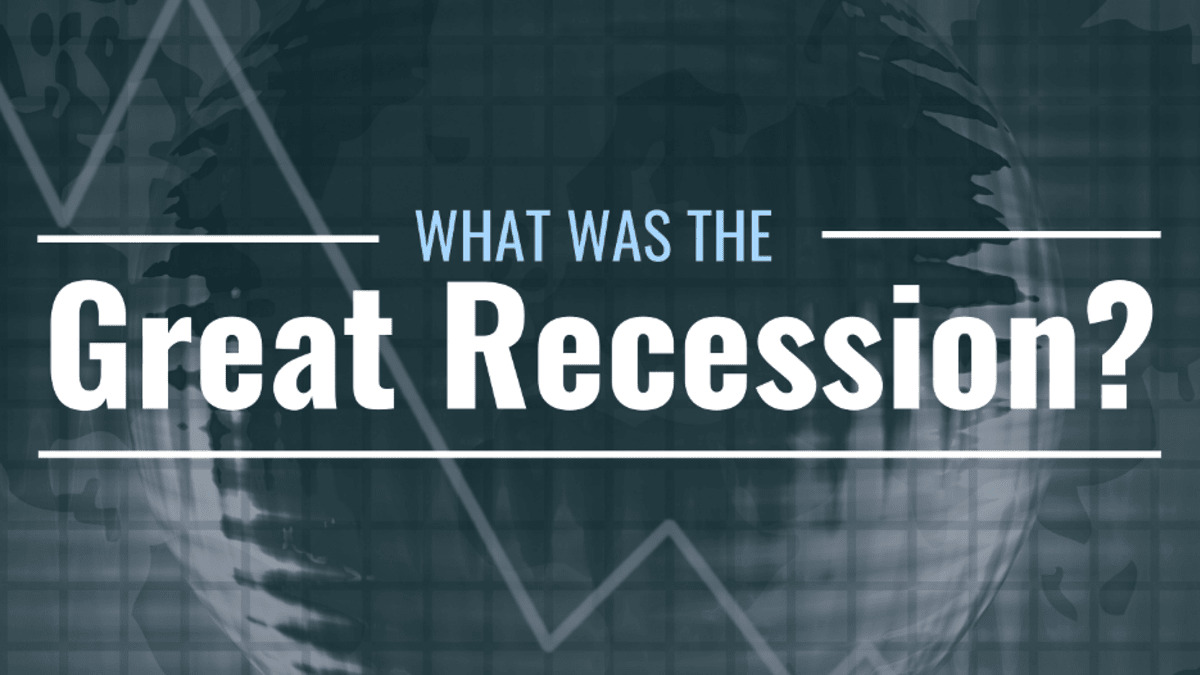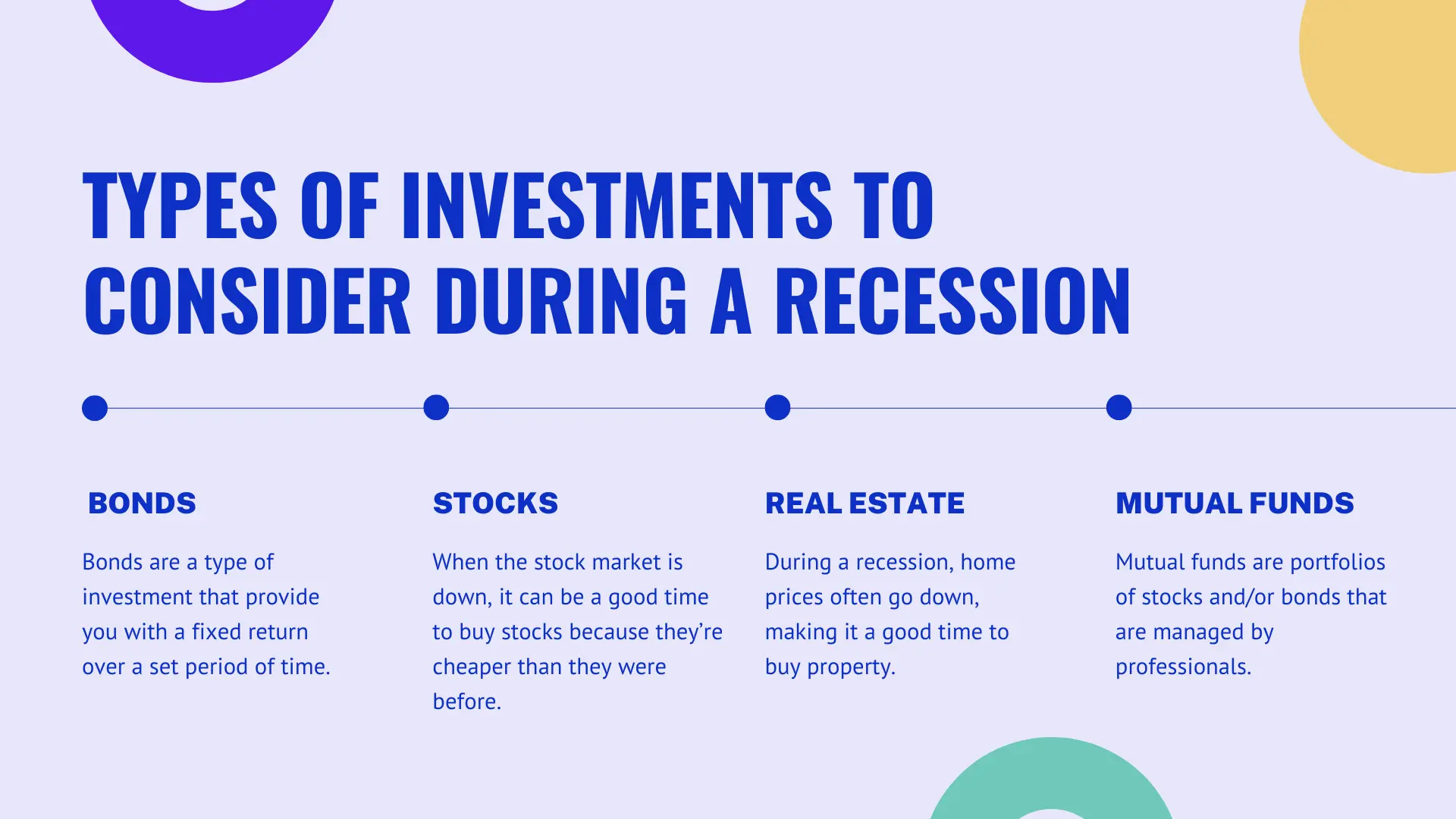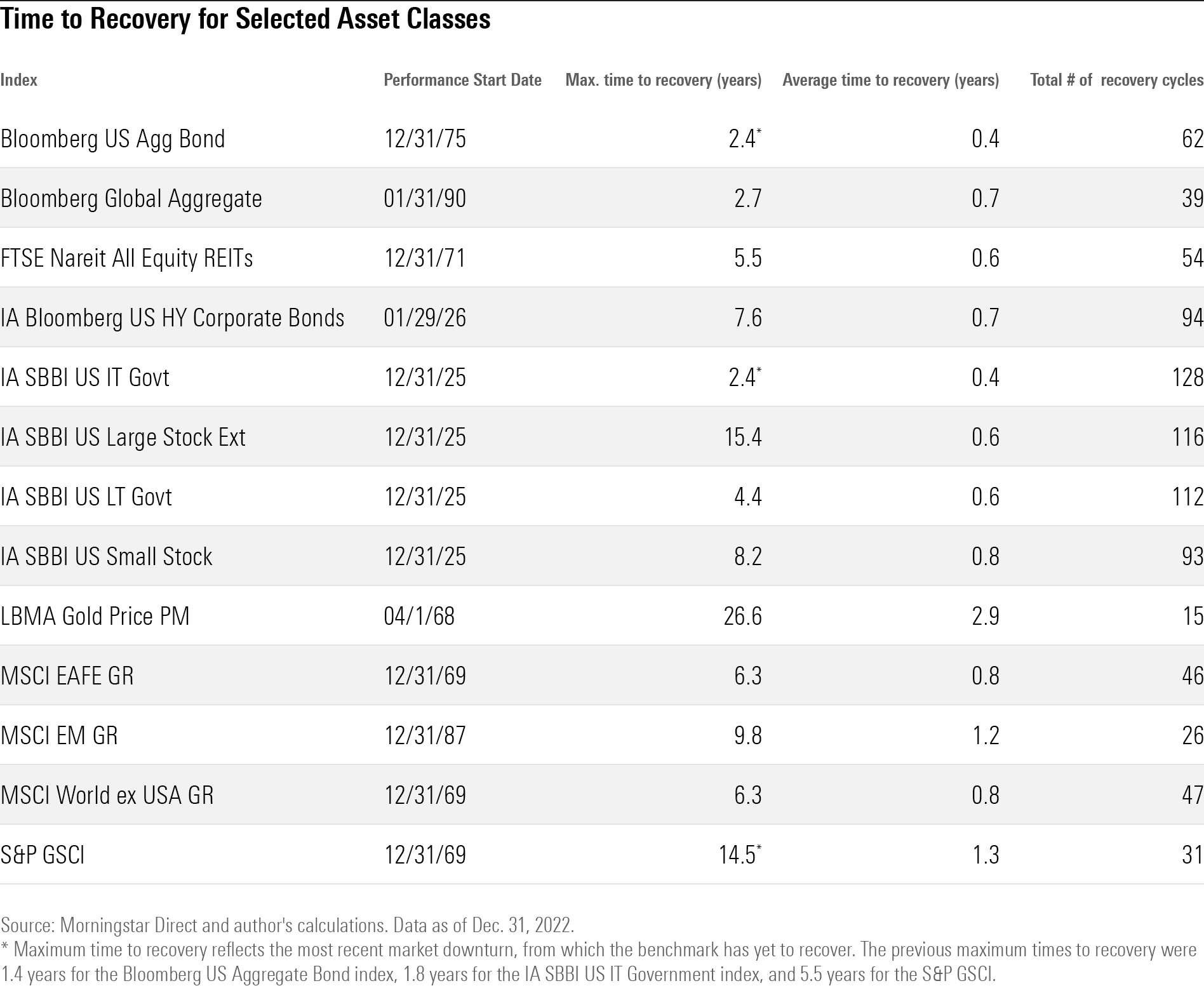Real Estate
The Great Recession, which occurred between 2007 and 2009, had a profound impact on the financial markets. Many investments suffered significant losses during this period, but there were a few sectors that managed to weather the storm and even thrive amidst the economic downturn. One such sector was real estate.
While residential real estate experienced a sharp decline in value during the housing market crash, commercial real estate and rental properties proved to be more resilient. Investors who had the foresight to invest in income-generating properties, such as office buildings, retail spaces, and multi-family units, were able to generate steady cash flow and mitigate the impact of the recession.
During the Great Recession, the demand for rental properties increased as people lost their homes to foreclosure or opted to downsize. This surge in demand helped to sustain rental prices and provide a consistent source of income for real estate investors. Additionally, commercial real estate benefited from long-term leases and stable tenants, providing a buffer against the volatile market conditions.
Furthermore, the government response to the recession, such as the implementation of low interest rates and stimulus packages, helped to stimulate the real estate market. These measures made it easier for investors to obtain financing and encouraged buyers to enter the housing market. The resulting increase in demand for real estate properties contributed to the recovery of the sector.
Real estate investment trusts (REITs) also offered an attractive investment option during the Great Recession. These publicly traded companies own and manage income-producing properties and distribute the majority of their taxable income to shareholders. REITs not only provide investors with exposure to the real estate market but also offer the benefits of diversification and professional management.
Overall, real estate proved to be a resilient investment during the Great Recession. While residential housing experienced a downturn, income-generating properties and REITs offered stability and potential for long-term growth. Investors who had the foresight to recognize the opportunities in the real estate market were able to navigate the challenging economic landscape and come out ahead.
Gold
During the Great Recession, gold emerged as a safe haven for investors seeking stability amidst the financial turmoil. As the stock market plummeted and the value of many investments plunged, the price of gold soared to record highs. This precious metal proved its worth as a reliable store of value and a hedge against inflation.
One reason why gold performed well during the Great Recession is its historical reputation as a “safe haven” asset. When investors fear economic instability or uncertainty, they often turn to gold as a tangible and stable investment. Gold has a long track record of retaining its value over time and acting as a hedge against currency devaluation and inflation.
Furthermore, during times of financial crisis, central banks and governments tend to implement measures to stimulate the economy, such as lowering interest rates, injecting liquidity into the market, or increasing government spending. These actions can lead to concerns about inflation and the devaluation of fiat currencies. In such scenarios, gold represents a reliable asset that can preserve purchasing power in the face of potential currency depreciation.
Another factor that contributed to the resilience of gold during the Great Recession was the increase in demand from institutional investors and central banks. These entities sought to diversify their portfolios and reduce their exposure to traditional financial assets, such as stocks and bonds, which were significantly affected by the economic downturn. The shift towards gold as a safe haven investment led to increased demand and drove up its price.
Investors also turned to gold as a defensive strategy during the Great Recession. The volatility in the stock market and the overall uncertainty in the economy led many to seek out assets that were perceived as less risky. Gold, with its long-established reputation, offered a sense of stability and protection against market fluctuations.
In summary, gold proved to be a valuable asset during the Great Recession. Its historical reputation as a safe haven and hedge against inflation, combined with increased demand from institutional investors, helped drive its price upward. By investing in gold, investors were able to safeguard their wealth and navigate the uncertain economic landscape.
Treasury Bonds
When it comes to seeking safe investments during times of economic uncertainty, treasury bonds are often considered a reliable option. During the Great Recession, treasury bonds emerged as a preferred investment choice for many investors looking to preserve capital and generate a steady income stream.
Treasury bonds, also known as T-bonds or T-notes, are debt securities issued by the U.S. government. They have a fixed interest rate and are backed by the full faith and credit of the U.S. government, making them one of the least risky investments available. As a result, they attract investors seeking stability and a predictable income stream, especially during times of economic turmoil.
One of the reasons why treasury bonds performed well during the Great Recession is their status as a safe haven investment. When stock markets experienced severe volatility and other financial assets faced significant uncertainty, investors turned to treasury bonds for their relative stability and low risk of default. The U.S. government’s ability to raise revenue and honor its debt obligations even in a recessionary environment gave investors confidence in the safety of treasury bonds.
In addition to their safety, treasury bonds offered attractive yields during the Great Recession. As economic conditions worsened and interest rates declined, the U.S. Federal Reserve implemented monetary policies to stimulate the economy. These policies, such as lowering the federal funds rate, resulted in lower yields on various fixed-income investments. However, the demand for treasury bonds increased as investors sought higher returns in a low-interest-rate environment. This increased demand drove up the price of treasury bonds and resulted in relatively higher yields compared to other fixed-income securities.
Furthermore, treasury bonds provided investors with a consistent income stream in the form of regular interest payments. The U.S. government has a strong track record of meeting its interest payment obligations, even during times of economic downturn. This reliable income stream was particularly appealing to investors seeking steady cash flow during the Great Recession when other sources of income were more unstable.
In summary, treasury bonds proved to be a secure and lucrative investment during the Great Recession. Their status as a safe haven, attractive yields, and reliable income stream made them a preferred choice for investors looking to preserve capital and generate consistent returns amidst the economic turmoil. By investing in treasury bonds, individuals could mitigate risk and ensure stability in their investment portfolios.
High-Quality Corporate Bonds
During the Great Recession, high-quality corporate bonds emerged as a promising investment option for investors seeking stability and reliable income. These bonds, issued by financially strong companies with good credit ratings, offered a combination of safety, higher yields than government bonds, and the potential for capital appreciation.
One of the reasons why high-quality corporate bonds performed well during the Great Recession is that they carried a lower default risk compared to lower-rated bonds. As the economic downturn unfolded, many companies faced financial difficulties and experienced credit downgrades or defaults. However, high-quality companies with strong balance sheets and stable cash flows were better positioned to weather the economic storm and meet their debt obligations. This reduced default risk provided investors with a sense of security and helped drive demand for high-quality corporate bonds.
Moreover, corporate bonds offered higher yields than government bonds during the Great Recession. As central banks implemented monetary policies to stimulate the economy, interest rates were lowered, reducing the yields on government bonds. In contrast, corporate bonds offered higher yields to compensate investors for taking on additional risk. This attractiveness of higher yields in a low-interest-rate environment made high-quality corporate bonds an appealing investment option.
During the Great Recession, the U.S. Federal Reserve also implemented measures to support the corporate bond market. One such initiative was the purchase of corporate bonds through quantitative easing programs. These purchases helped stabilize corporate bond prices and increased liquidity in the market. The intervention of the central bank enhanced investor confidence in the corporate bond market, leading to increased demand and favorable returns for investors.
In addition to the potential for regular interest income, high-quality corporate bonds also offered the possibility of capital appreciation. As economic conditions improved and companies recovered from the recession, the creditworthiness of high-quality corporate bond issuers was positively impacted. This, in turn, led to an increase in the value of the bonds. Investors who held high-quality corporate bonds during the Great Recession had the opportunity to benefit from both the interest payments and the appreciation of their bond holdings.
In summary, high-quality corporate bonds proved to be a valuable investment during the Great Recession. Their lower default risk, attractive yields, potential for capital appreciation, and support from central banks all contributed to their performance. By investing in high-quality corporate bonds, investors were able to preserve capital, generate income, and take advantage of favorable market conditions.
Dividend-Paying Stocks
During the Great Recession, dividend-paying stocks provided investors with a unique opportunity to generate income and potentially benefit from capital appreciation. These stocks, issued by companies that distribute a portion of their profits to shareholders as dividends, offered a way to mitigate risk and generate steady returns amidst a volatile market.
One of the reasons why dividend-paying stocks performed well during the Great Recession is their ability to provide a consistent income stream. Even during times of economic downturn, companies that continue to generate stable profits often maintain their dividend payments. This income can help offset potential losses in other investments and provide investors with a reliable source of cash flow.
Dividend-paying stocks also offer potential for capital appreciation. While stock prices experienced significant fluctuations during the Great Recession, companies with a history of paying dividends tend to be more stable and less susceptible to drastic price declines. These companies often have established business models, strong cash flows, and conservative financial practices, which can provide a level of resilience in challenging market conditions.
Furthermore, dividend-paying stocks are known for their defensive characteristics. During a market downturn, investors often seek out companies that can weather economic uncertainties and continue to operate profitably. Dividend-paying stocks tend to be associated with more mature, profitable companies that can withstand economic downturns by virtue of their stable business models and strong financial positions. These qualities make dividend-paying stocks more attractive to investors during challenging economic times.
Another advantage of dividend-paying stocks is their potential for dividend growth. While some companies may hold their dividend payouts steady during periods of economic uncertainty, others continue to raise their dividends even in difficult times. These consistent dividend increases can provide investors with the opportunity to capture both current income and capital appreciation over the long term.
During the Great Recession, dividend-paying stocks benefited from the overall preference for income-generating investments. As interest rates declined, investors looked to alternatives that could offer attractive yields. Dividend-paying stocks often provided higher yields compared to fixed-income investments, making them an appealing option for investors seeking income-generating assets.
In summary, dividend-paying stocks performed well during the Great Recession due to their ability to provide a consistent income stream, offer potential for capital appreciation, exhibit defensive characteristics, and benefit from investor preferences for income-generating investments. By investing in dividend-paying stocks, investors could potentially generate a steady stream of income while also benefiting from potential capital appreciation.
Utilities Stocks
During the Great Recession, utilities stocks proved to be a resilient investment option for investors. These stocks, issued by companies in the utility sector such as electric, water, and gas providers, offered stability, consistent cash flows, and attractive dividend yields during a time of economic uncertainty.
One of the reasons why utilities stocks performed well during the Great Recession is the essential nature of their services. Regardless of the economic conditions, people still need access to electricity, water, and gas for their daily lives. This consistent demand for utilities services provided a level of stability and predictability for companies in this sector, ultimately benefiting their stocks.
Moreover, utilities stocks are often known for their reliable cash flows. As regulated entities, utility companies typically operate in monopolistic or semi-monopolistic markets, which allows them to have a steady customer base and pricing power. This stability in revenue and cash flow generation makes utilities stocks an appealing choice for investors seeking consistent income and potential long-term growth.
In addition to stability, utilities stocks are often associated with attractive dividend yields. Utility companies are required by regulation to distribute a portion of their profits to shareholders in the form of dividends. During the Great Recession, when interest rates were low and other fixed-income investments offered minimal yields, utilities stocks stood out as an appealing option for income-seeking investors.
Utilities stocks also tend to have lower volatility compared to other sectors. This characteristic can be particularly appealing during times of economic uncertainty when market fluctuations and volatility are heightened. Investors looking for a defensive investment option often turn to utilities stocks for their ability to weather market downturns with relatively steady performance.
Furthermore, utilities companies typically have significant infrastructure investments. These investments can provide a source of growth and stability for the sector. During the Great Recession, governments and central banks implemented stimulus programs that included infrastructure projects. This increased investment in infrastructure benefited utilities companies, as it created additional demand for their services and supported their growth prospects.
Overall, utilities stocks demonstrated their resilience during the Great Recession. Their essential services, steady cash flows, attractive dividend yields, lower volatility, and growth potential from infrastructure investments positioned them as a favorable investment option. By including utilities stocks in their portfolios, investors were able to benefit from stability and potential income streams during the economic downturn.
Consumer Staples Stocks
During the Great Recession, consumer staples stocks emerged as a favorable investment option for investors seeking stability and consistent performance. These stocks, issued by companies that produce essential goods and services such as food, beverages, household products, and personal care items, offered resilience and a steady demand even in the face of economic downturn.
One of the reasons why consumer staples stocks performed well during the Great Recession is the non-discretionary nature of their products. Regardless of the economic conditions, people continue to need and purchase essential items like groceries, toiletries, and household supplies. This consistent demand for consumer staples products provided a level of stability and predictability for companies in this sector, ultimately benefiting their stocks.
Moreover, consumer staples stocks tend to exhibit defensive characteristics during economic downturns. When consumers face financial constraints, they may cut back on discretionary spending but continue to prioritize their spending on essential items. This defensive nature of consumer staples stocks allows them to maintain relatively stable revenue and earnings even during challenging economic times, making them an attractive choice for investors seeking stability and resilience.
In addition to their defensive nature, consumer staples stocks are often associated with reliable dividend payments. Many companies in this sector have a track record of consistently paying dividends, thanks to their stable cash flows and predictable earnings. During periods of economic uncertainty, when other sources of income may be at risk, the steady dividend payments from consumer staples stocks can provide a reliable income stream.
Furthermore, consumer staples stocks tend to possess competitive advantages that can help them maintain market share and pricing power, even in difficult economic conditions. Many companies in this sector have strong brand recognition, customer loyalty, and distribution networks, which allows them to withstand market pressures. These competitive advantages contribute to their ability to generate stable cash flows and maintain profitability, supporting their stock performance.
During the Great Recession, consumer staples stocks were also favored by investors due to their lower level of volatility compared to other sectors. The stability of their revenue streams and the consistent demand for their products provided a level of reassurance to investors during a time of market turbulence. Investors seeking more defensive investment options gravitated towards consumer staples stocks for their lower risk profiles.
In summary, consumer staples stocks demonstrated their resilience during the Great Recession by offering stability, reliable dividend payments, competitive advantages, and lower volatility. Their non-discretionary nature, defensive characteristics, and ability to maintain solid financial performance make them an attractive investment option, particularly during uncertain economic times. By including consumer staples stocks in their portfolios, investors were able to benefit from stability and potential income streams amidst the economic turmoil.
Health Care Stocks
Health care stocks proved to be a resilient investment option during the Great Recession. These stocks, issued by companies operating in the health care sector, offered stability, consistent demand for their products and services, and the potential for long-term growth even amidst economic turmoil.
One of the reasons why health care stocks performed well during the Great Recession is the essential nature of health care. Regardless of the economic conditions, people still need access to medical care, medications, and other health-related products and services. This consistent demand for health care services provided a level of stability for companies in this sector, ultimately benefiting their stocks.
Moreover, health care stocks are often associated with defensive characteristics. When faced with financial difficulties, individuals are likely to prioritize their health and well-being. This defensive nature of the health care sector allows companies within it to maintain relatively stable revenue and earnings even during economic downturns, making health care stocks an appealing option for investors seeking stability.
In addition to their defensive nature, health care stocks offer growth potential. The health care sector benefits from long-term trends such as population aging, advancements in medical technology, and increasing global demand for health care products and services. These trends provide opportunities for companies in the sector to drive innovation, expand their offerings, and capture market share, ultimately leading to potential long-term growth for investors.
Furthermore, the health care sector is known for being less susceptible to economic cycles. Health care expenditures are generally less sensitive to changes in economic conditions, as they are influenced by factors such as demographics, disease prevalence, and evolving medical needs. This stability in demand for health care services contributes to the resilience of health care stocks during economic downturns.
During the Great Recession, government interventions and stimulus programs also provided support to the health care sector. Various countries implemented measures to stimulate health care spending and enhance access to medical care during the economic downturn. These initiatives helped boost demand for health care products and services, benefiting companies in the sector and supporting the performance of health care stocks.
Overall, health care stocks proved to be a stable and attractive investment option during the Great Recession. Their essential nature, defensive characteristics, growth potential, stability of demand, and government support contributed to their performance. By including health care stocks in their portfolios, investors were able to benefit from stability, long-term growth prospects, and potential capital appreciation in a challenging economic environment.
Technology Stocks
Technology stocks emerged as a standout performer during the Great Recession. These stocks, issued by companies operating in the technology sector, offered investors the potential for growth, innovation, and resilience in the face of economic uncertainty.
One of the reasons why technology stocks performed well during the Great Recession is their ability to drive innovation and adapt to changing market conditions. Technological advancements and digital transformation became even more crucial during the economic downturn as businesses sought to streamline operations, reduce costs, and improve efficiencies. Companies in the technology sector, with their focus on innovation and providing solutions to businesses and consumers, were well-positioned to benefit from this growing demand.
Moreover, technology stocks were generally less affected by the economic downturn as they tend to have a global reach and diverse revenue streams. While other sectors experienced significant declines in revenue and profits, technology companies continued to experience growth and generate substantial profits. Their ability to operate on a global scale and serve markets beyond the limitations of physical boundaries provided a level of resilience and stability that contributed to their performance.
In addition to their resilience, technology stocks offered the potential for significant capital appreciation. The demand for technological solutions and products continued to grow as businesses and consumers increasingly relied on digital platforms and devices. This increased demand drove up the value of technology stocks and created opportunities for investors to benefit from their capital appreciation.
During the Great Recession, governments and central banks implemented stimulus programs and initiatives to support economic recovery. Many of these programs focused on investing in infrastructure and promoting technological advancement. This bolstered the technology sector, as companies benefited from government contracts, grants, and incentives to encourage innovation and stimulate growth. The support from government initiatives further enhanced the performance of technology stocks during the economic downturn.
Furthermore, technology stocks tend to be associated with high-growth sectors such as software, e-commerce, cloud computing, and biotechnology. These sectors have traditionally outperformed during periods of economic growth and recovery. By investing in technology stocks, investors were able to participate in the potential growth of these sectors and capitalize on the long-term trends driving technological advancements.
In summary, technology stocks proved to be a resilient and attractive investment option during the Great Recession. Their focus on innovation, adaptability to changing market conditions, global reach, potential for capital appreciation, and support from government initiatives contributed to their strong performance. By including technology stocks in their portfolios, investors were able to benefit from growth prospects and participate in the ongoing digital transformation across various industries.
Energy Stocks
The performance of energy stocks during the Great Recession was impacted by various factors. These stocks, issued by companies in the energy sector, experienced both challenges and opportunities as a result of the economic downturn and the subsequent measures implemented to stimulate the recovery.
One of the key challenges faced by energy stocks during the Great Recession was the sharp decline in oil prices. The global economic slowdown led to a decrease in demand for oil and gas, resulting in a surplus of supply. This oversupply, combined with reduced consumer spending and constraints on transportation, significantly affected the profitability of energy companies. As a result, many energy stocks experienced substantial declines in their stock prices.
However, the decline in energy stocks also created opportunities for investors. As the market corrected and stock prices fell, some energy stocks became undervalued. Investors who recognized the long-term potential of the energy sector saw this as an opportunity to acquire energy stocks at attractive prices.
Furthermore, government intervention played a significant role in supporting the energy sector during the Great Recession. Many countries implemented stimulus programs that included investments in renewable energy, energy-efficient infrastructure, and green technologies. These initiatives aimed to create jobs, promote sustainable growth, and reduce dependence on traditional fossil fuels. The support from governments provided a level of stability and growth potential for energy stocks in the alternative energy and clean technology sectors.
Additionally, during the Great Recession, the energy sector experienced technological advancements and innovation. Companies in the sector focused on improving efficiency, reducing costs, and developing new sources of energy. This drive for innovation presented opportunities for investors to capitalize on the potential growth of energy stocks involved in renewable energy, energy storage, and other clean technologies.
It is important to note that the performance of energy stocks during the Great Recession varied depending on their specific subsector and individual company dynamics. While traditional energy companies faced challenges due to the decline in oil prices, those involved in alternative energy, renewable resources, and sustainable technologies had the potential for growth and resilience.
In summary, the performance of energy stocks during the Great Recession was impacted by the decline in oil prices, government intervention in the energy sector, and technological advancements. While traditional energy companies faced challenges, the renewable energy and clean technology sectors presented opportunities for growth. By carefully assessing the market dynamics and focusing on emerging trends, investors could capitalize on the potential of energy stocks in the evolving energy landscape.

























